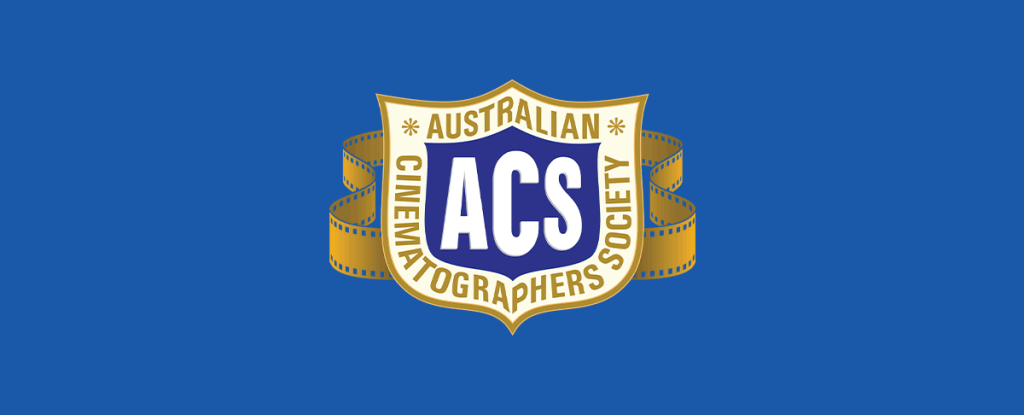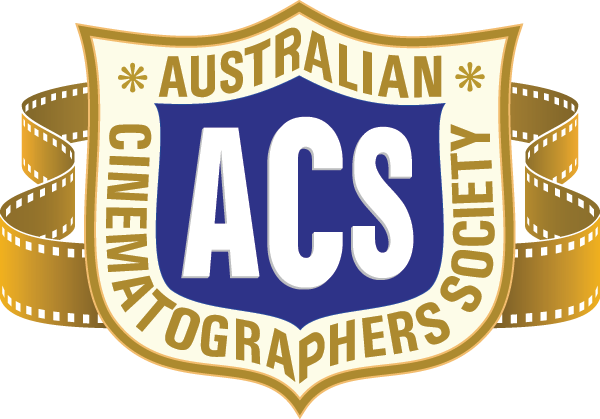The Equity Summit: Gender On The Agenda – Warwick Field ACS

The Equity Summit: Gender On The Agenda ~ Report by Warwick Field ACS, President, ACS Victoria.
The Summit Structure.
Dates: December 4th and 5th 2016
Venue: The Malthouse Theatre, Sturt Street, Melbourne, Victoria, Australia.
See the program and speakers here:
Katie Milwright ACS and I attended the summit representing the Australian Cinematographers Society. At the outset we agreed to write separate reports on our findings and then confer later. In order to avoid a lot of repetition we compared our essays to put forward a report from two viewpoints that hopefully forms an informative and complete picture of the summit and our thoughts on the subject for the ACS and for anyone interested in reading it. My report is primarily a report on the structure and methods of the summit and my thoughts on the state of equality in the industry. Katie’s report brilliantly explains the history and status of females working in our business from her position as a successful and sought after cinematographer who happens to be female. I am also very pleased to announce that Katie became the first female Victorian ACS member to achieve Accreditation this year. Victoria boasts two other accredited cinematographers, Leilani Hannah ACS and Mandy Walker ACS ASC but they were members in NSW at the time of their accreditation.
The various panels during the conference were all aimed at producing a discussion about gender equality in the entertainment and media industry. The speakers’ topics and viewpoints represented a global perspective but it was quite clear early on that not all countries are the same when you look to the statistical evidence that was presented about females working in the industry.
The differences in the cultures, approaches and methods of the various countries were what I found curious as they must act as pointers to a possible action in Australia that could result in a closer gender parity in our industry. More on this opinion later.

For clarity, I should explain the sort of positions that were being described at the summit. It broadly covered people working as performers on a stage or on a screen, the personnel behind the scenes working as creative and technical crew and those involved in funding, marketing and distribution of productions.
So by addressing those mentioned above, the summit attempted to talk to those either experiencing gender bias or those who may consciously or unconsciously make gender biased decisions that ultimately result in figures that show proportionally fewer women than men working in the industry. In most cases those percentages are quite extreme.
Before I make any further observations about the revelations and findings of the speakers at the summit, it is probably prudent to point out that whilst this summit was called “Gender On The Agenda” it really reached far beyond gender equity in almost all the discussions. Diversity in personnel can range from gender to race, culture, ethnicity, religion, sexual preference, socio-economic status, gender identity, native language, people of colour, people with disability and so on. The conference delegates and speakers tended to agree that it is not only in gender that greater opportunity can be offered but also to all people who may be disadvantaged in some way by biases.
The facts and figures presented were from several sources but perhaps the studies carried out by the ‘Geena Davis Institute On Gender In Media’ in the USA were the most complex and telling. The keynote speaker at the conference was Madeline Di Nonno who works with the Geena Davis Institute. Madeline opened the summit and set the tone.
Geena Davis started the Institute when she became aware of the imbalance and wanted to provide hard, factual, number-based evidence to the studios and executives (in the USA) in the hope of creating a more even result of women working in the industry. Research continues to be carried out by the USC (University of Southern California) and the data put forward at the summit was by and large taken from an American sample, especially relating to on screen gender samples. Having said that Madeline also showed figures comparing the data from a variety of international screen productions including the UK, USA/UK co-productions, Australia, Sweden and other European countries. The scope of this report doesn’t allow me to fill the pages with columns and pie charts, but for the purpose of making the point the USA percentages illustrate the general landscape of gender spread of certain key roles and it’s a fair representational figure for many countries including Australia. In the USA females make up 7% of directors, 13% of writers and 20% of producers. Australia is marginally better.
For screen gender evaluation (of the cast), the Institute received funding from Google and using technology from Google produced software that analyses and identifies male and female characters by appearance and voice as the film plays. It is called the “Geena Davis Inclusion Quotient” (GDIQ). Using this tool, the following figures emerged: on the screen, lead actors are 25% female. Overall (including background actors) male cast outnumbered females 2:1. This included animated films.
To get to the point, the Geena Davis Institute studies provided data that could be used to demonstrate the gender inequity that for many years had been considered an exaggeration and also show that some countries were managing to achieve a better balance than the USA (and Australia) such as the UK and Sweden which go close to parity in several roles.
Let’s distil all this data simply into this: Females have been and continue to be grossly underrepresented in our industry on screen and behind the scenes.
At the summit the question was posed “Why does it matter if we don’t have gender equity in the film industry?” Well, why does it matter?
- Relating to gender equity on screen.
As filmmakers, we are in the privileged position of producing material that is seen all over the world by people comprised of many cultures and backgrounds. Our images are viewed by males and females of all ages but it is perhaps the young that are most influenced by the social landscape depicted on screen in terms of shaping their futures. At an impressionable age, young girls and boys can be “told” about the roles of males and females in our society. It was put forward many times at the summit that we are obligated to assess how we portray that landscape and to act responsibly. It is likely on that front we can do much better.
The Geena Davis Institute uses an animation to make the point called “See Jane”. “See Jane” is a campaign to raise awareness of gender bias. The suggestion is that when a girl sees a girl enacting roles in society it informs them it is possible that a particular path is open to them to follow as a female. It also informs the males that the protagonist or the ‘hero’ does not necessarily have to be a male. In Katie’s report you will read of examples of this. - Relating to gender equity in cinematography.
In order for gender equality and representation in story telling on screen, we do better when the voice to comes equally from men and women behind the camera. Directors, writers, cinematographers, everyone.
Katie and I attended the summit to learn primarily how gender inequity might impact upon females working as cinematographers (and in the camera department as a whole) and how it might impact upon females trying to get started in the camera department.
For me, the questions to raise among our cinematographic community are these:
- To what degree is there gender inequity in cinematography in Australia?
- Are we moving closer to parity?
- What steps can the ACS take to further ensure the opportunity for females to work in camera is unhindered?
- Is the film set a place where females feel like they belong and are safe and comfortable? If not what should we do to improve it?
- What are the responsibilities of the DP on set addressing issues relating to sexism, racism and general discrimination in the crew?
As cinematographers, most of us are not qualified to find the practical solutions to improving the gap in gender equity. I’m certainly not. But we can assess our own industry and look around our own sets, do some counting and make evaluations as to how we are doing. It’s then we can say, “Ok. What can I do about this?” Perhaps we make unconscious choices in crewing that can be more equitable. The task of increasing the number of female cinematographers is a goal for all of us but perhaps also largely a focus for producers and directors as they are instrumental in the choices of key personnel.
There were many quotable quotes at the summit that may bear sharing and considering in closing.
“Is inequality based on a lack of skills or lack of opportunity?”
“Men and women behave differently and these traits can be both advantageous and disadvantageous in certain situations”
“Women are naturally collaborators and this can mean they are not pushy enough”
“It’s important to tap the talent pool of the entire population”
“You may need to reach out to females – don’t expect them to approach like males will”
“Females need to be over-achievers to be seen”
“When we achieve equality we will have as many mediocre women directors as men”
Gillian Armstrong AM.
The take-home from this is that there is a wealth of female talent in Australia that are not being given an opportunity. Women are not asking for a leg up but a foot in. They simply need the chance to prove themselves equally.
Warwick Field ACS.
Check out the report by Katie Millwright ACS
I was very happy to join Warwick Field ACS on behalf of the ACS to attend the Gender Equity Summit in Melbourne recently. Panel discussions over the two days were a rounded exploration of issues. There was a bit of ground covered and I’ve editorialised to make sense of it as a Cinematographer.
The Gender Equity Summit in Melbourne’s main agenda was to discuss Gender Equality in the screen industry with a big focus on female representation onscreen.
The significance to us is the lack of female stories and key creatives, notably of course, Cinematographers.
Screen industries around the world are finally beginning to take notice of what is apparent to any female working in the film industry: women are grossly underrepresented on and off the screen in our work. The statistics are embarrassing and undeniable, onscreen there is a one in four ratio of female to male, in the US 7% of directors, 13% of writers, and 20% of producers are female. The numbers in Australia are 16% Directors, 32% Producers and 23% Writers.

